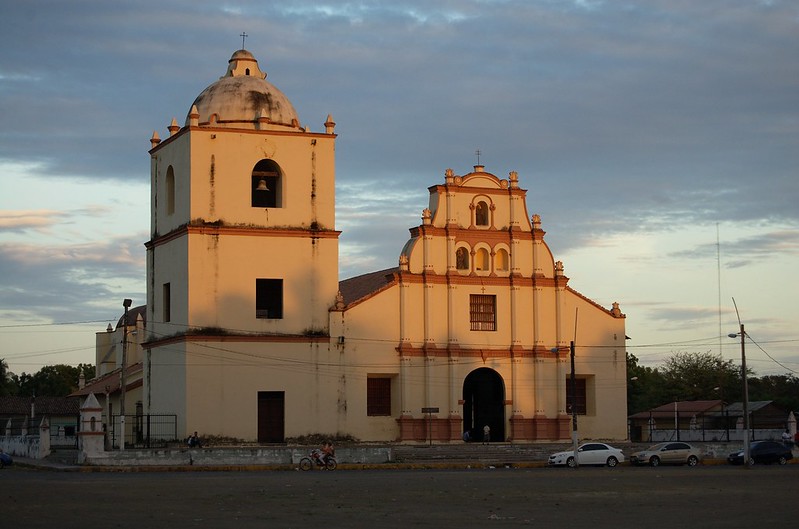The Feast of San Jerónimo in Masaya has long characterized Nicaraguan folklore. However, its idiosyncrasy has profoundly influenced indigenous communities like Sutiaba, which has led me to conclude that the rituals performed at the celebration also serve to build social solidarity while simultaneously imposing adherence to the Catholic Church.
The Feast of San Jeronimo lasts about three months, making it Nicaragua’s longest celebration. During the festivities, there are three processions in which peañeros carry an image of the patron saint. This procession combines elements of the Spanish colonial period with some indigenous rituals.
In effect, this festival starts at the end of September with the “descent.” On this day, the peañeros lower the image from the altar, which is located in the Cathedral of the Assumption of Mary and carry it through the streets to the rhythm of dance, chicheros (street vendors), and heavy drinking. Their destination is the Church of Sutiaba, where they perform dances in tribute to indigenous gods. After spending the night there, the image is returned to its original place. However, this festivity does not end after returning the image, as locals continue to pray and perform rituals in the name of the patron saint for the remaining months.
Sutiabans typically celebrate this festival with bombastic rituals and intense zeal, building a strong sense of social solidarity across generations. Thus, the past becomes the present and the future becomes one with the past, creating a context for a distinctive social union. As a mestizo culture, Sutiaba maintains many of its indigenous institutions, despite the impact of colonialization.
Latin American religious syncretism is heavily defined by symbol expropriation, the influence of the Catholic Church’s canon law, and social institutions originating in European conquest. This syncretism has allowed the Hispanic-American religious-cultural network to create and generate its constitutive resources.
According to Alvarado (2015), Latin American religious syncretism allows for the notion of transcendence, which is the belief that God’s power and existence surpasses the material world. This idea is directly projected in concrete expressions of cultural identity, especially in religious forms and icons.
Symbolic representation preserves a mobilizing resistance, especially in these rituals that foster celebration and spirituality. Historically, the symbols have created new realities, spaces of generational connection, value of image, dances and clothes that have marked a distinctive space in the festivity and in the city of Sutiaba.
Historians agree that indigenous elements have influenced the population, as the image of St. Jerome is not only considered a symbol of resistance, but also a reflection of a sacred image that does not judge them for what they have and for who they are. The latter has inspired thousands of devotees from wealthy and marginalized neighborhoods to commemorate it every year, making the celebration a cultural feature of Sutiaba.
The fervent belief in San Jeronimo is due in part to the influence that his image and religion has exerted over time within the indigenous community. For this reason, the celebration is much more than a religious ceremony that demands communal effort. It is a celebration linked to social relationships that can manifest as cohesion and conflict. The latter is due to the fact that, in this type of festivity, spaces of unanimity are created around social imagery and the celebration inspires a sense of strength.
This festivity is one of the many representations of popular religiosity that we can find in Latin America and in the Nicaraguan Catholic world, which still preserve the elements of religious syncretism in indigenous communities that resist modernity by maintaining their traditions and beliefs.
Sutiaba, León flickr photo by Cosabuena shared under a Creative Commons (BY) license
References:
Alvarado, M. (2015). Sincretismo Religioso Latinoamericano y pensamiento católico. Universidad Católica Blas Cañas.

